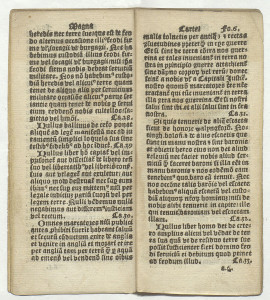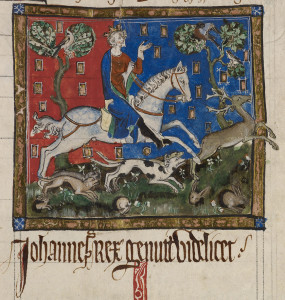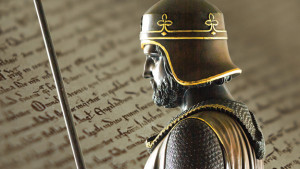The four surviving copies of the original 1215 Magna Carta will come together for the first time in history as part of a one-off event organised by the British Library to mark the 800th anniversary of the signing of the historic document. Julian Harrison, curator of medieval manuscripts at the British Library explains why it is important we should commemorate these medieval documents.
If you’ve been keeping your ears to the ground, you may be aware that 2015 marks the 800th anniversary of the granting of Magna Carta. Interest in the ‘Great Charter’ (the English translation of Magna Carta) is certainly on the rise. Already this year radio and television documentaries have been broadcast about Magna Carta, politicians of all parties have latched on to its principles, and controversy has raged over the new Royal Mint coin which shows the Great Charter being ‘signed’ in 1215.
People sometimes question why we are commemorating Magna Carta this year. Is a medieval document, written in Latin, still relevant today? The simple answer is that Magna Carta has had widespread influence over the past 800 years, particularly in the English-speaking world. It has influenced politicians and campaigners worldwide, including Thomas Jefferson, Winston Churchill and Nelson Mandela, and certain of its values are echoed in later constitutional texts, such as the United States Bill of Rights (ratified in 1791) and the Universal Declaration of Human Rights (1948). Just three clauses of Magna Carta remain valid in English law, but the most significant and influential one, never repealed, is this:
‘No man shall be seized or imprisoned, or stripped of his rights or possessions, or outlawed or exiled, or deprived of his standing in any other way, nor will we proceed with force against him, or send others to do so, except by the lawful judgment of his equals or by the law of the land. To no one will we sell, to no one deny or delay right or justice.’
This February a truly historical event will be taking place at the British Library, when the four surviving manuscripts of King John’s Magna Carta are brought together for the very first time. When the document was first granted in 1215, many copies were made for distribution throughout the kingdom of England, most probably being sent to the bishops or sheriffs so that Magna Carta could be read out in public. Four of these original manuscripts are still in existence, two of which are preserved at the British Library and the others being held by Lincoln Cathedral and Salisbury Cathedral. This year will be the first occasion that the four manuscripts of the 1215 Magna Carta will be temporarily displayed in one location.
Last October a public ballot was held, giving one thousand, twelve hundred and fifteen people (the number is deliberate) the opportunity to see the four Magna Carta manuscripts side-by-side for the first time in history. Nearly 50,000 people applied worldwide to obtain one of these precious tickets, all of which have now been allocated. Also, as part of the unification event at the British Library, members of the AHRC-funded Magna Carta Project will be able to examine the manuscripts in close detail, in order to resolve questions about their production and later history. The British Library is one of the partners in this project, together with the University of East Anglia, King’s, London, Canterbury Christ Church University and the University of Oxford.
We’d like to reassure everyone that, even if they were unsuccessful in the public ballot, they will still be able to see Magna Carta in 2015. After the unification event at the British Library, the Salisbury and Lincoln manuscripts will return home, and will both be on display this year, at Salisbury Cathedral and the new Lincoln Castle Vault respectively. Meanwhile, the British Library is staging the largest exhibition ever devoted to Magna Carta, open to the public from 13 March until 1 September 2015.
Magna Carta: Law, Liberty, Legacy will feature not only the British Library’s two 1215 Magna Carta manuscripts, but also other exhibits telling the story of the origins and legacy of this world-renowned document, among them the manuscripts of the American Declaration of Independence and the United States Bill of Rights (both to be displayed for the first ever time in the UK). All told, the British Library’s Magna Carta exhibition will contain some 200 items, including books, paintings, cartoons and a wide range of other artefacts. The exhibition is also accompanied by a catalogue and a special learning website devoted to Magna Carta. As one of the exhibition curators, it’s wonderful to see all our hard work coming to fruition, and we look forward to seeing as many of you as possible at the British Library this year, as we celebrate 800 years of Magna Carta.
Julian Harrison is Curator of Pre-1600 Historical Manuscripts at the British Library, and co-curator of Magna Carta: Law, Liberty, Legacy. He is also editor of the Library’s Medieval Manuscripts Blog, named Arts and Culture Blog of the Year 2014 at the inaugural UK Blog Awards.



